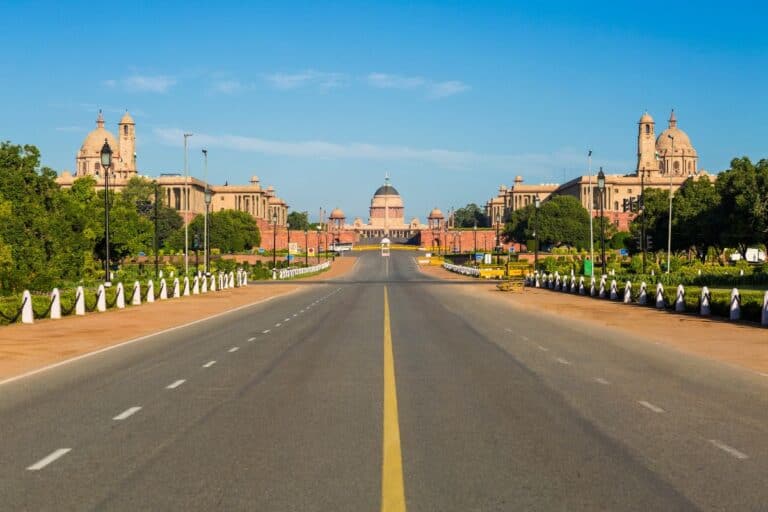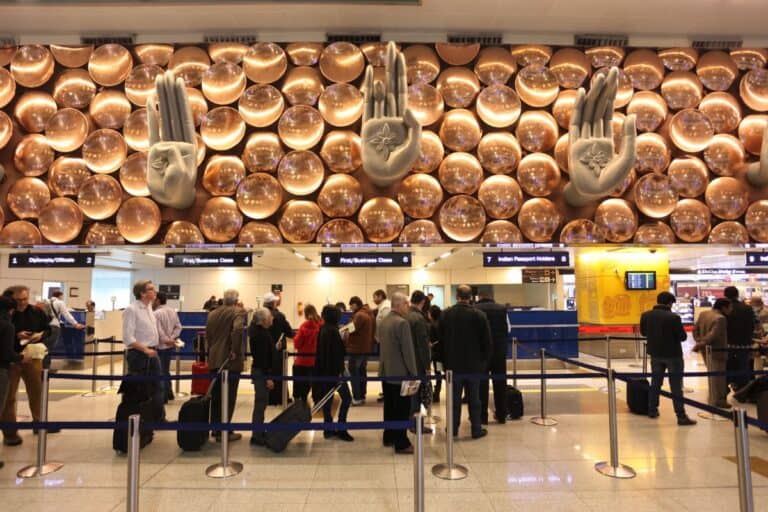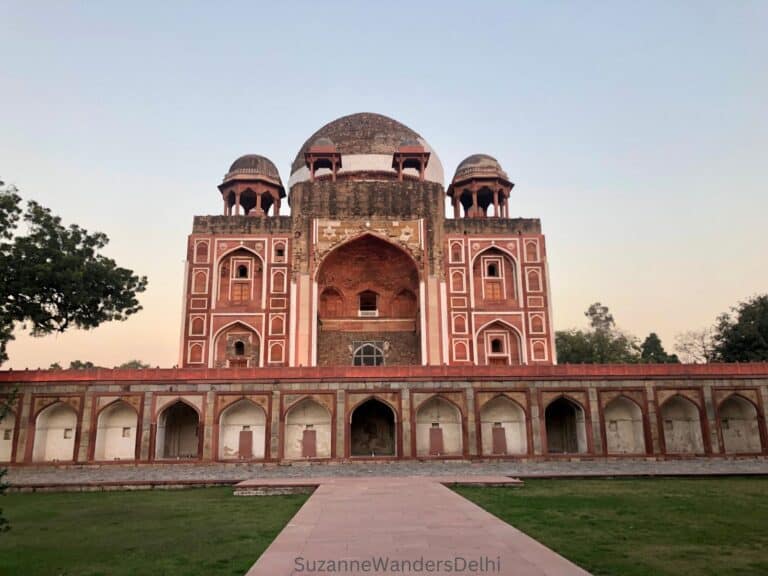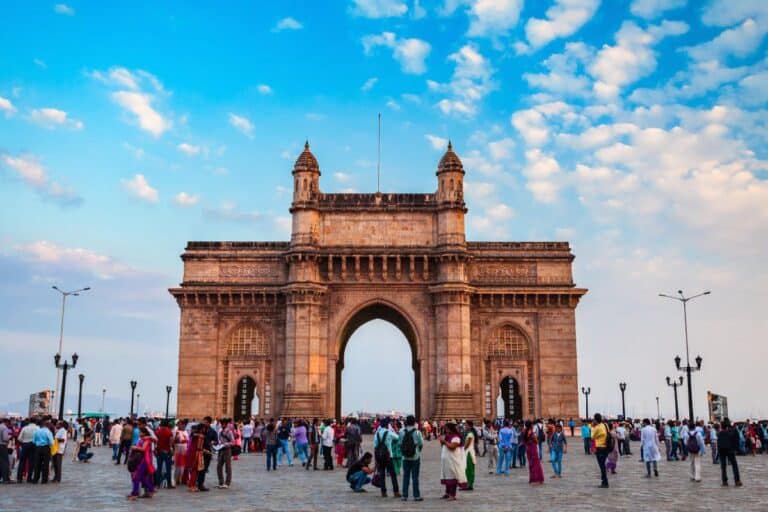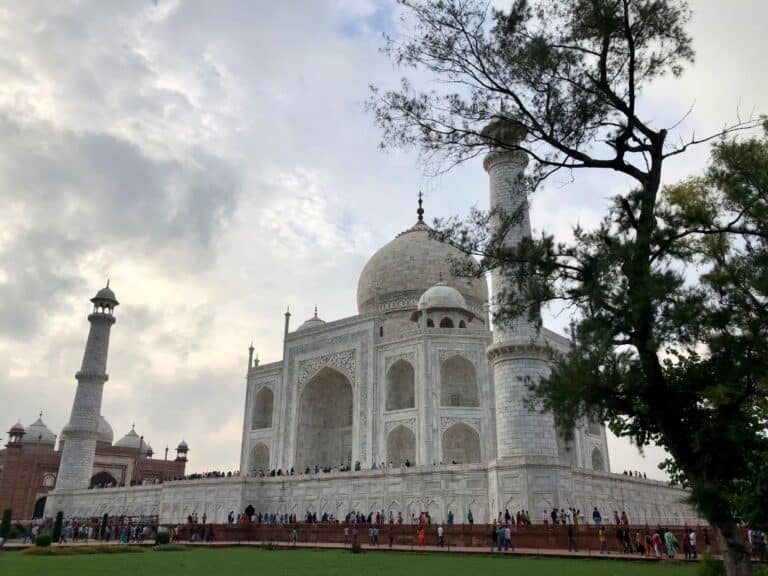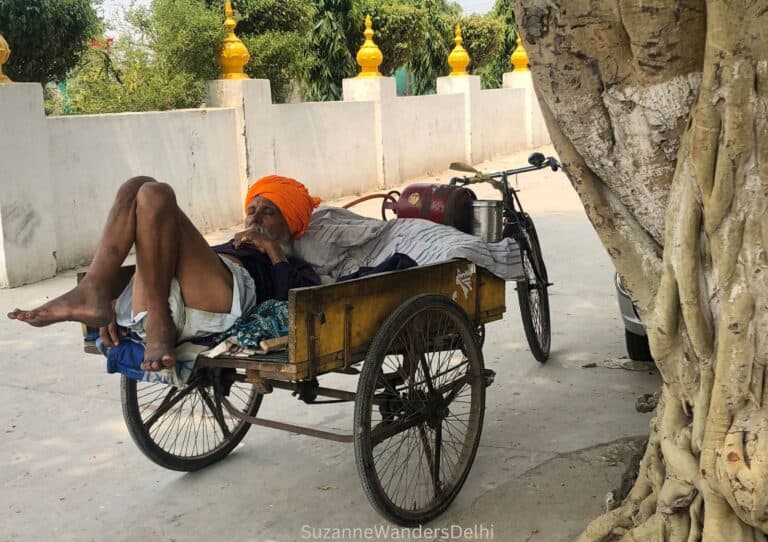Suzanne Wanders Delhi contains affiliate links.If you make a purchase using one of the links below, I may receive compensation at no extra cost to you. I only recommend products and services I use and trust. Read my disclaimer for more information.
Most visitors are surprised to find out that Delhi has a fantastic metro system. I live in Delhi and take the metro all the time. Although it’s a massive network, it’s extremely easy to use and everything is in English. Mastering the metro is simple and will save you time and money. Delhi is so traffic clogged, riding the metro is the best way to get around.
The Delhi metro is differently-abled friendly with elevators, extra wide pay gates, ramps, tactile paths, handrails along stairs and accessible toilets. The Delhi metro is also an environmentally friendly system and has won many awards for its green initiative. No wonder it is known as the lifeline of the city.
If it’s your first trip to Delhi, read my complete guide and suggested itineraries for first time visitors.
The Network
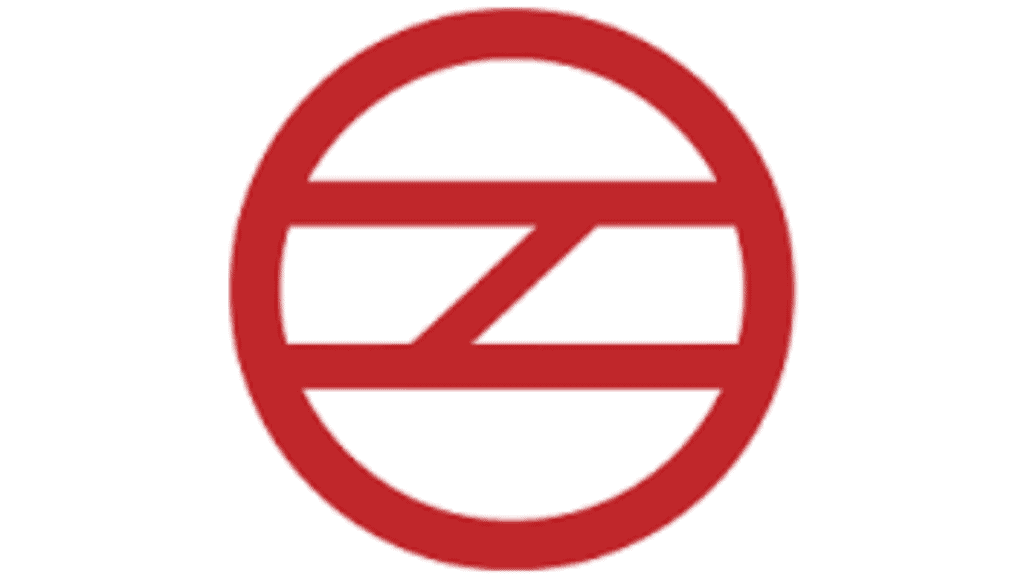
Currently the metro is 391 km long and has 286 stations. It’s a newer system, the first lines started operating in 2002. The network is continually under expansion and is forecast to be the third largest metro network in the world by 2026.
Including the airport express line and the networks that service the suburbs of Noida and Gurugram, there are 12 lines. It pretty much goes everywhere you could want which is why riding the metro is the best way to get around Delhi.
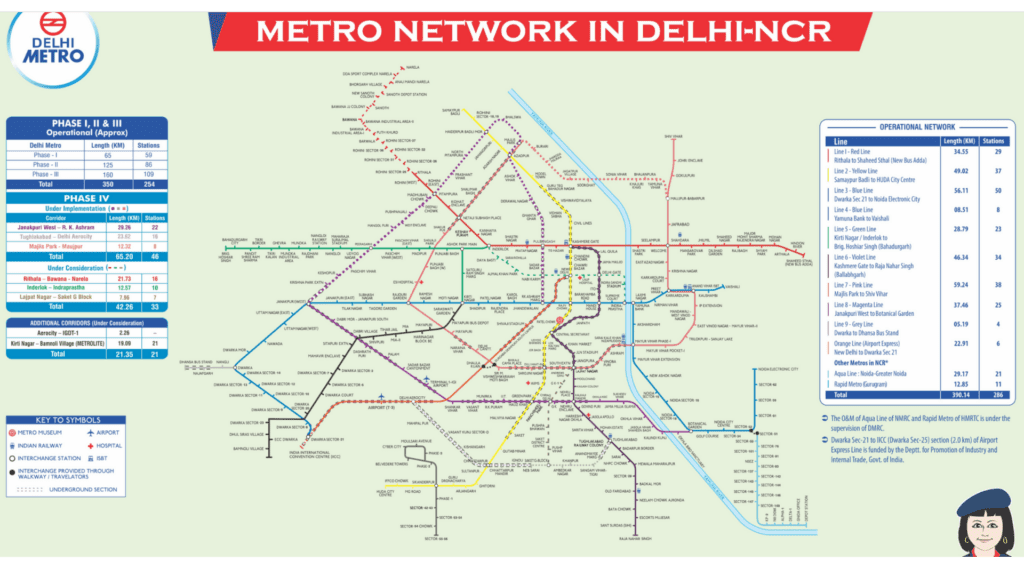
Hours of Operation and Fares
The Delhi metro runs between 6:00 am and 11:00 pm.
Single fares range from INR 10 to INR 60 depending on the distance. There is a 10% discount for metro card users and a 10% discount during off-peak hours and weekends. Children under 3 feet travel free. The cheap fares are one of the reasons riding the metro is the best way to get around Delhi.
The Best Free App for the Delhi Metro and Planning Your Route
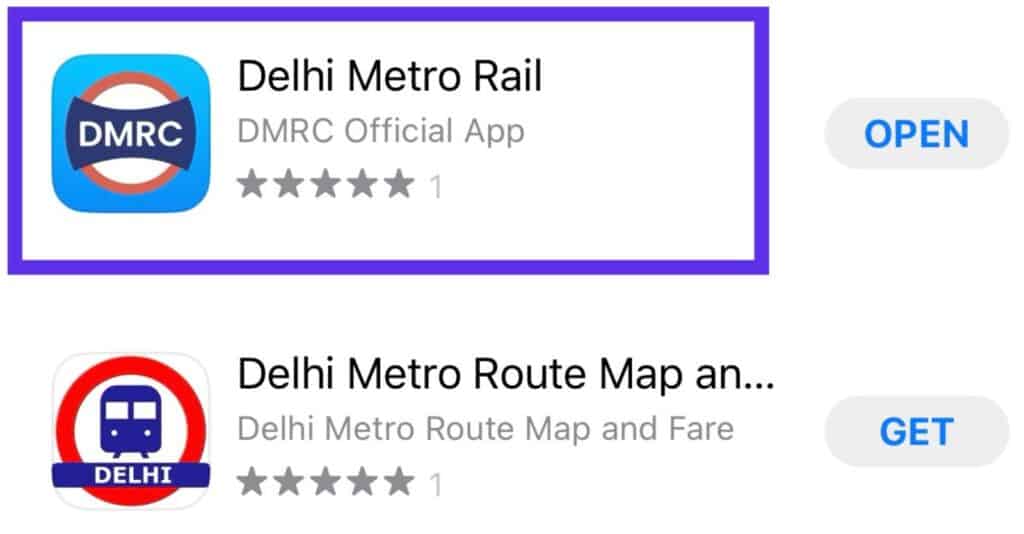
Delhi Metro Rail has an app you can load onto your smart phone to help navigate the system. The most helpful features are the interactive route map and the route finder.
There is also a route planner on the official Delhi metro website:
https://www.delhimetrorail.com/
It’s All Colour Coded
Everything on the metro is colour coded making it easy to navigate. This is another reason riding the metro is the best way to get around Delhi.
Train lines are named by colour, each train has a coloured stripe on its exterior indicating which line it operates on, signs painted on the floors are colour coded, and pink seats in each carriage designate seating for women only.
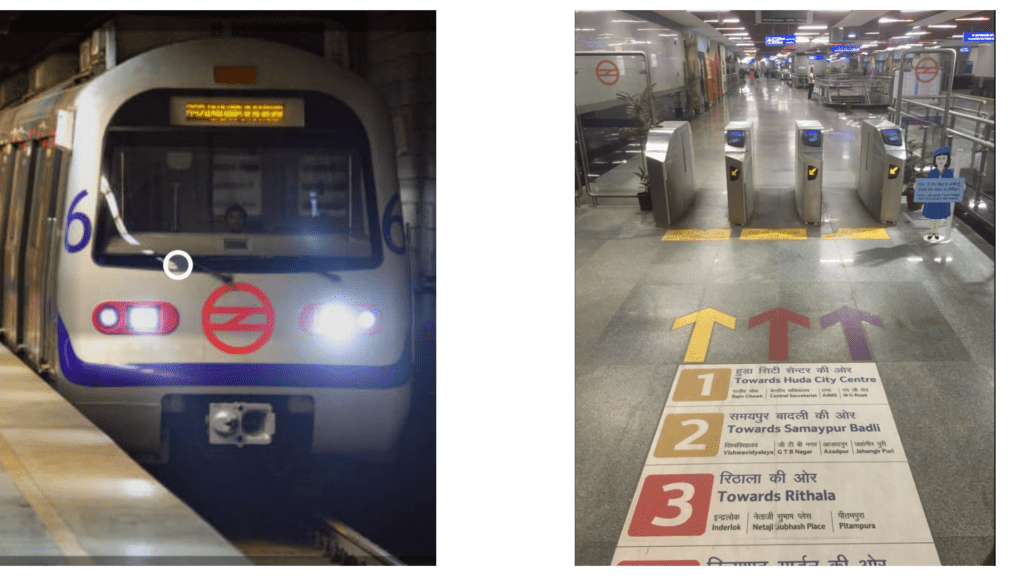
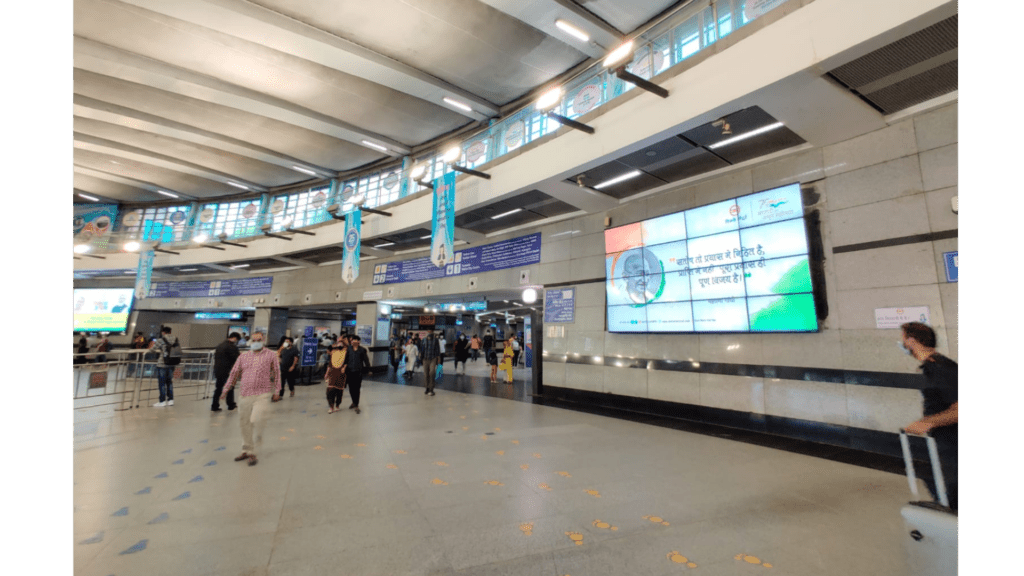
The floors are painted with coloured footprints indicating directions to different train lines. It’s impossible to get lost.
Buying the Fare – Tokens and Metro Card
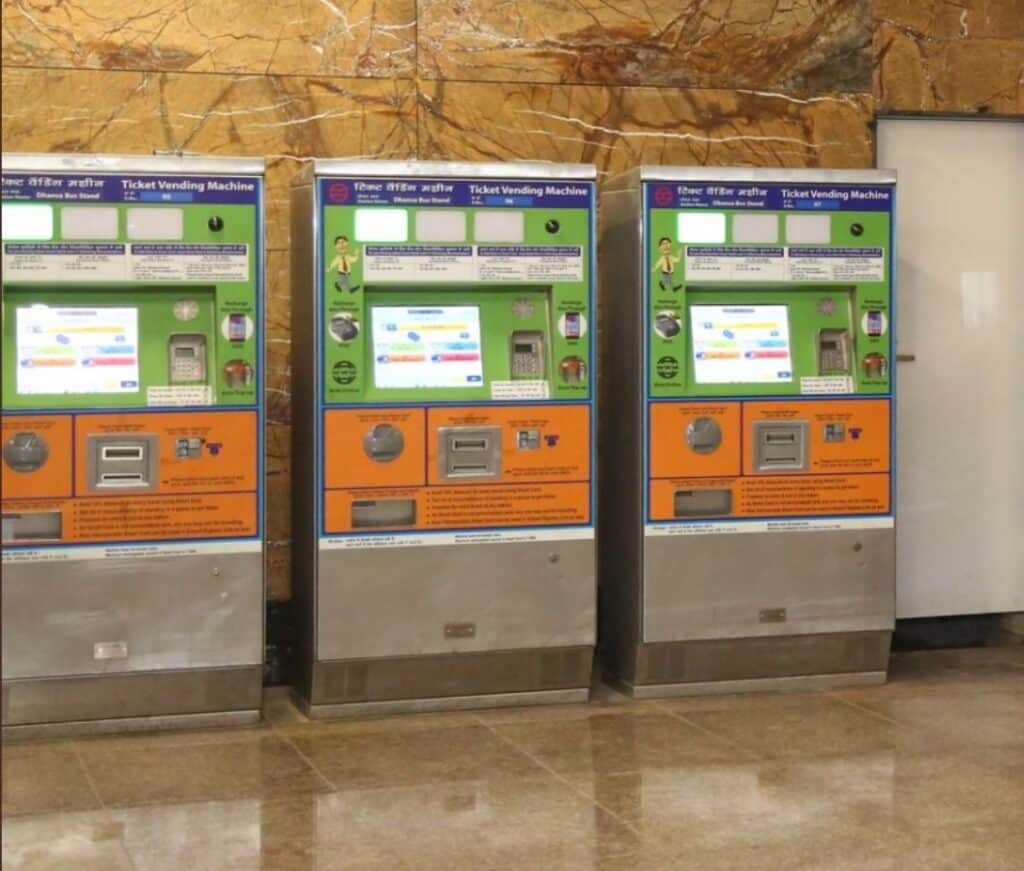
You can pay for your fare with tokens or a metro card. Both of these can be purchased at the ticket windows in the station. Tokens can also be purchased using the automated ticket machines in each station.
Metro cards must initially be purchased from the ticket window but can be topped up at the automated ticket machines after.
Tokens
Tokens are valid for a single, one way journey and must be used on the day of purchase. The token must be used at the station purchased, which means you cannot buy two and use one later for the return trip.
Tell the clerk which station you are traveling to and they will issue you a single journey token. If using the ticket machine, just enter the name of the station and it will calculate your fare and issue the token.
Metro Card
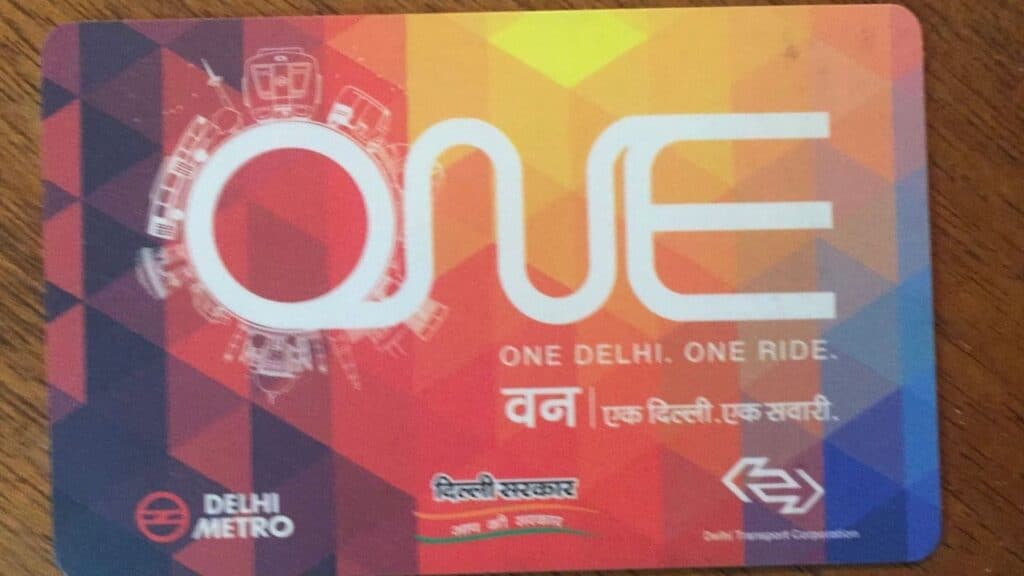
If you are planning to use the metro more than two or three times I recommend getting a metro card. It’s more convenient than buying a token for each trip and enables you to enter all gates of the metro, not just the ones with a ticket window or machine.
There is a INR 50 refundable deposit for the card and you have to put INR 200 on it initially. After that it can be topped up by INR 100s to a maximum of INR 3000. Any balance remaining is completely refundable minus a INR 5 processing fee.
Tourist Cards
Tourist cards are available for 1 day (INR 200) or 3 day (INR 500) with unlimited metro rides, except on the Airport Express (orange) line, the rapid metro Gurugram and the Aqua line (Noida-Greater Noida).
This includes the INR 50 refundable deposit for the card. If you want your deposit back at the end you can do this at the ticket window. They will deduct at INR 5 processing fee.
Insider tip: I don’t recommend the tourist cards unless you are planning to ride the metro for long distances multiple times in one day. The regular metro card is a better deal, and you can use the regular card on the Airport Express line and the Gurugram and Noida lines.
Getting Through Security at the Metro
Delhi has a lot of security. Bags have to be scanned and people get screened with a metal detector before entering malls, hotels and many attractions. The Delhi metro is no different. Before you can pay your fare and make your way to the platform you must go through security.
First, place your bags and/or purse on the security conveyer belt (just like at the airport). You do not need to remove electronic devices or anything from your bags. Just put them down as they are. I don’t leave my mobile in my bag, I carry it with me.
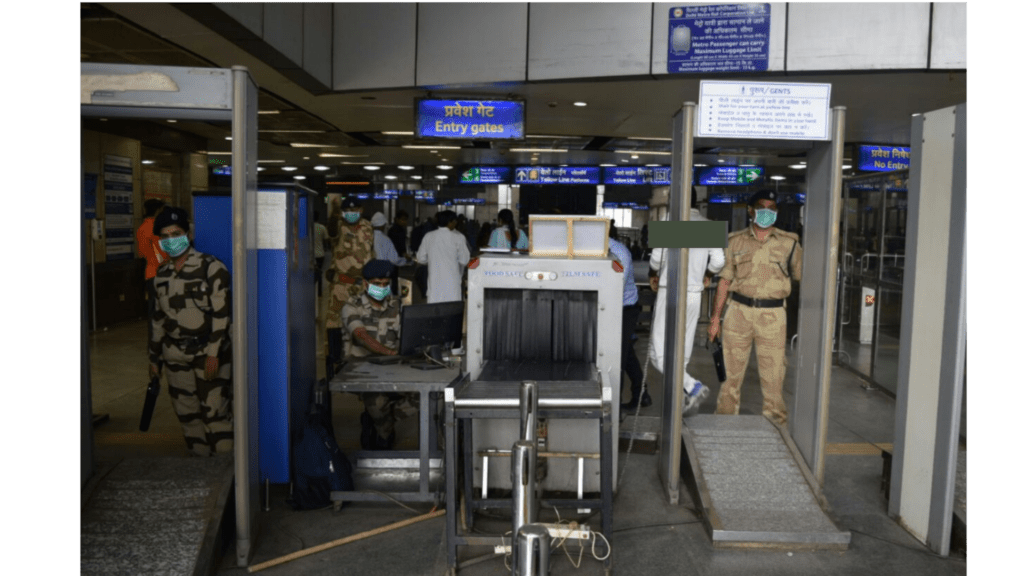
Second, get into the security line. There are separate lines for men and women. You do not need to remove anything.
The men’s is on the right, the women’s is on the left (usually). The women’s security area is sectioned off for modesty and policed by female security guards. When it’s your turn, go into the booth, stand on the platform, raise you arms into a T and let security scan you.
Then pick up your bags and make your way toward the platforms. It sounds lengthy, but it moves fast.
What is Not Allowed on the Delhi Metro
Sharp objects are not allowed on the Delhi metro. I was with a seamstress friend of mine when her fabric shears were nearly confiscated. Security gave her a pass, but I think this was because she was a foreigner and managed to explain the situation in broken Hindi.
Pets are not allowed on the Delhi metro. As a small dog owner, this is the only thing I don’t like about the metro. My life would be so much easier (and cheaper) if he could ride the metro!
Photography and eating is also prohibited in the metro. As of June 30, 2023, passengers are permitted to bring up to 2 unopened bottles of alcohol on the metro.
Paying and Getting to the Platform
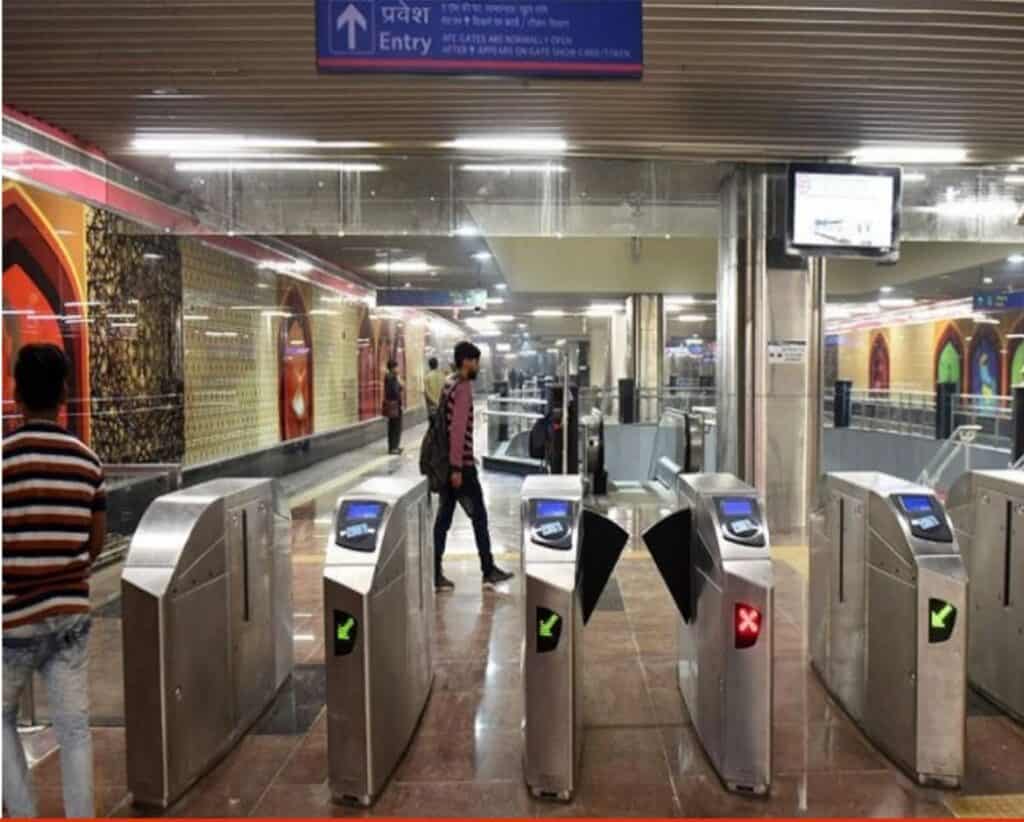
To pay your fare, simple scan your metro card or token on the reader at the top of the automated fare collection machine. If you’re using a metro card, the reader will display the remaining balance. Quickly go through while the flaps are open.
Follow the directional signs and make your way to the train platform. Keep your token or metro card handy because you will need it to exit the metro system.
Exiting the Metro
Drop your token into the automated fare collection machine. If using a metro card, scan it at the top of the machine like you did when entering the metro.
You do not need to go through security again. Most stations have multiple entrance and exit gates that will be well signed. To save time and avoid the possibility of having to cross busy Delhi streets, know which gate you need to exit to reach your destination.
Women’s Carriages
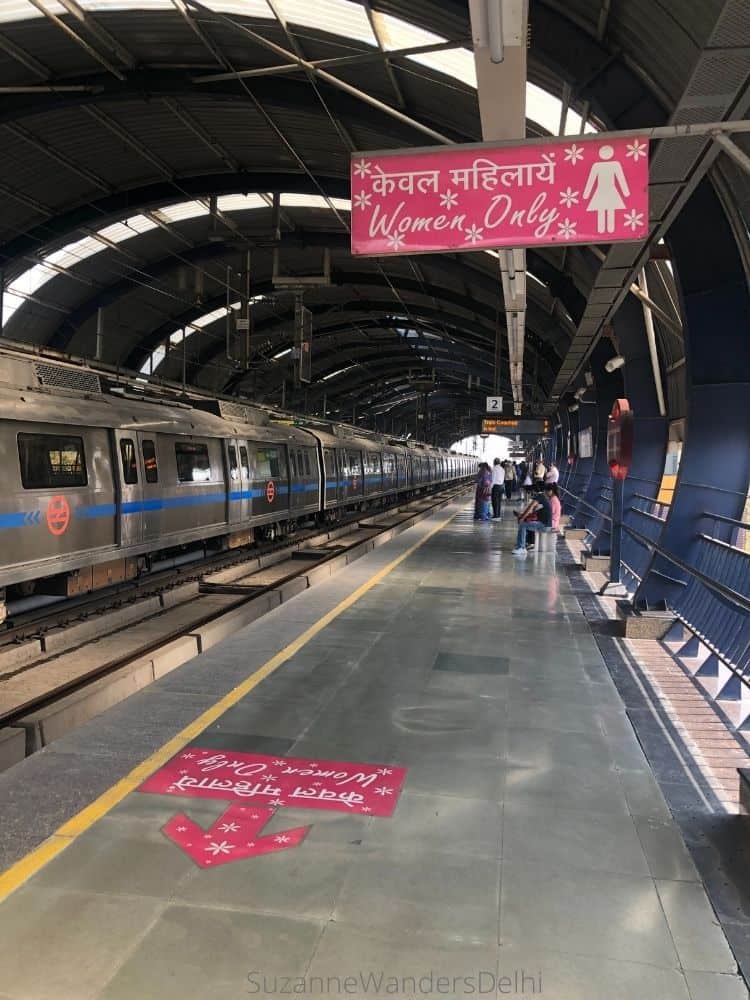
Each train has a women’s only carriage. It is the first carriage in the direction the train is moving.
If you are a woman traveling without a male companion, I recommend riding in these carriages. They are usually not as crowded and if they are crowded at least you will be squished up against other women.
The location of the women’s carriage is easy to spot on the platform, just look for the bright pink sign with flowers.
If you’re a man and you find yourself in a carriage with all pink seats, you’re in the women’s carriage. Just walk through the carriage to the next one as quickly as possible. If you’re a foreigner you’ll probably be forgiven, but if you’re an Indian man who should know better, you will be harshly redirected and scolded by the female passengers.
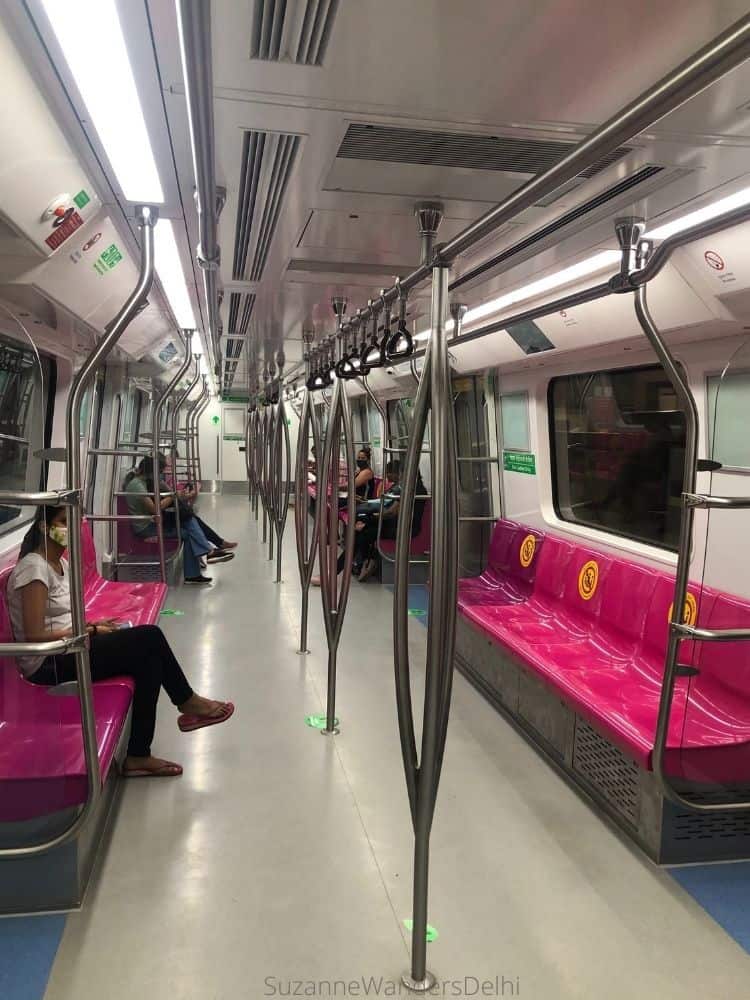
As a woman I have always felt completely safe riding the Delhi metro, another reason it’s the best way to get around Delhi.
Airport Express Line
It’s easy to get to all terminals of the airport using the metro. The Orange Line is the Airport Express Line and it stops at Indira Gandhi International Airport, Terminal 3.
These trains operate from 5:30 am to 11:30 pm daily. It takes 23 minutes to travel from New Delhi station to the airport. You can use a regular metro card and the fare is INR 10 – INR 60, depending on which station you board at. There are racks for luggage.
If you are flying out of Terminal 2 you can easily walk there from Terminal 3. It’s well signed and less than 5 minutes. There are also shuttle buses.
If you are traveling to Terminal 1, the Airport Express line does not stop there (though you could take the airport shuttle bus between terminals). Instead, take the Magenta line to T-1 IGI Airport station. See my complete guide on how to get into Delhi from the Indira Gandhi International Airport.
Which Metro Stations are Closest to the Train Stations
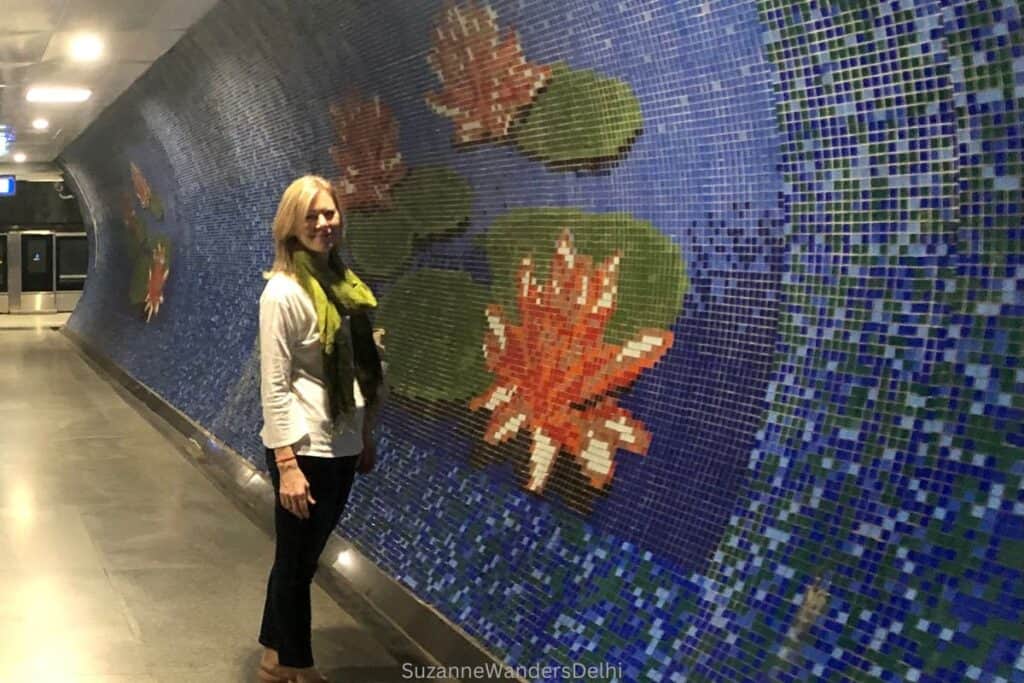
Delhi has five major train stations. If you are taking a day trip or traveling to your next destination, chances are you will travel from one of these stations:
- Old Delhi Railway Station (DLI) – Chandni Chowk metro station (Yellow Line)
- New Delhi Railway Station (NDLS) – New Delhi metro station (junction of Yellow and Orange Lines)
- Hazrat Nizamuddin Railway Station (NZM) – Hazrat Nizamuddin metro station (Pink Line)
- Anand Vihar Railway Station (ANVT) – Anand Vihar metro station (junction of Pink and Blue Lines)
- Delhi Sarai Rohila Railway Station (DEE) – Shashtri Nagar metro station (Red Line)
Visit the Metro Museum
The Patel Chowk metro station (on the Yellow Line) is home to the Metro Museum. I wouldn’t make a special trip just to see the museum but it’s definitely worth a look if you’re traveling on the Yellow Line.
The most surprising thing I learned at the museum was that the metro system was constructed in accordance with Vedic Hindu principles, though this really shouldn’t have surprised me given how spiritual India is.
The museum is open 10:00 am – 11:00 pm daily. Admission is free if you’re traveling on the metro, or INR 10 if you are not.
The Wrap-up on Riding the Metro: the Best Way to Get Around Delhi
Now you are are ready to ride the metro trains like a pro and get everywhere you need to go easily. You shouldn’t need any more convincing about why riding the metro is the best way to get around Delhi, but did I mention it’s air conditioned? See you on the rails!
Don’t forget travel insurance! It’s always a good idea to carry travel insurance just in case something goes wrong. I really like and use SafetyWing

